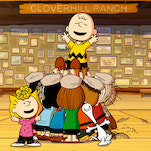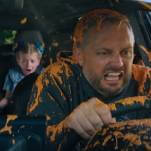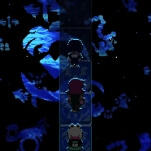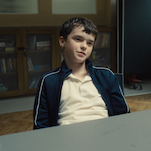Eerie, Indiana was a few dimensions ahead of its time

For the spookiest week of the year, there may be no more ideal one-season wonder than Eerie, Indiana. The nearly perfect ratings bomb ran for only a single season, as a boy moved to a small Midwestern town that turns out to be “the center of weirdness for the entire planet.” Every week offered Eerie’s own version of a Twilight Zone-like plot, framed by young Marshall (Omri Katz) and his friend Simon (Justin Shenkarow), as they investigate the town’s many supernatural mysteries, which no one else seems that aware of (like Marshall’s family) or troubled by (the rest of the town).
When Eerie, Indiana debuted on NBC in 1991, The X-Files was still a couple of years away. Buffy The Vampire Slayer was even further than that. There was one show that somewhat predicted the “small town hides a host of strangeness” format (with ties to a big-name director): Twin Peaks had debuted the previous year, in 1990, and made some significant supernatural inroads and influences before getting canceled after season two.
The supernatural show may have been on its way to its heyday, but there was a certain revival that also paved the way for Eerie’s particular kind of spooky menace: The 1980s had seen the popular return of bizarre and unsettling anthology series Twilight Zone along with a new one from Steven Spielberg, Amazing Stories. HBO brought back its Tales From The Crypt horror anthology series in 1989. (The Outer Limits also returned eventually, in 1995.)
Besides Twin Peaks and the new Twilight Zone, there was another pop-culture shift trope that helped affect Eerie, Indiana: a series of movies of idyllic towns hiding weirdness. Besides Lynch’s own Blue Velvet in 1986, Tim Burton’s Edward Scissorhands in 1990 featured a picture-perfect subdivision, complete with Dianne Wiest as a sweet Avon lady. 1989’s Parents and 1990’s Cry-Baby also depicted idyllic neighborhoods upended—by cannibalistic parents and a greaser Johnny Depp, respectively. Weirdness lurking on the outskirts of middle-class America was somehow in vogue.
So in 1991, there was a bit of an audience for the bizarre, but nothing to fill that void on broadcast television except for Eerie, Indiana. While the show was likely seen as unusual when it debuted in fall 1991, it might also have seemed vaguely familiar. Creators José Rivera and Karl Schaefer had previously written for family sitcoms like Family Matters. But there was one name that really helped put Eerie, Indiana on the map: director Joe Dante. The Gremlins director has always been expert at straddling the line between horror and humor, and Eerie, Indiana offered a prime opportunity for him to helm several episodes. The fact that the show was produced on film instead of video also must have appealed to the director, although the unusual step made the show much more expensive to produce (much to its eventual detriment).
The show kicked off its first (and every) episode with just a minimal intro from Marshall, explaining the weirdness of his new town in just a few sentences:
My name is Marshall Teller. I knew my new home town was going to be different from where I grew up in New Jersey, but this is ridiculous. Nobody believes me, but Eerie, Indiana is the center of weirdness for the entire planet. Item: Elvis lives on my paper route. Item: Bigfoot eats out of my trash. Item: even man’s best friend is weird. Still don’t believe me? You will.







































